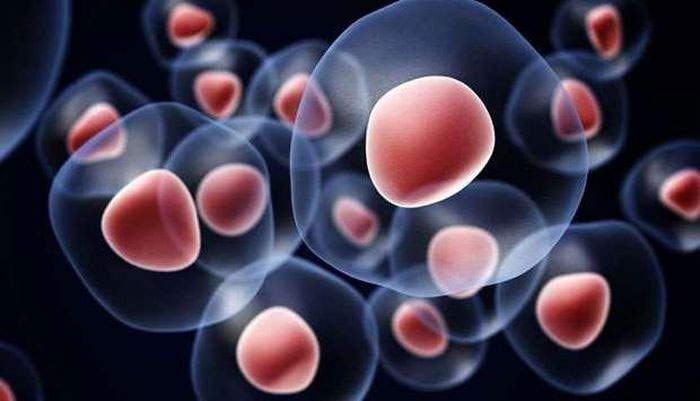Creating human stem cells from chemical molecules
Chinese scientists have transformed human somatic cells back into pluripotent stem cells using chemical molecules.
A team of researchers led by scientist Deng Hongkui from Peking University announced the discovery of a technique for chemical cell reprogramming for the first time.

Stem cells. Illustration: AFP
In the past, cell intrinsic components, including the oocyte cytoplasm and transcription factors, have been used to reprogram cells in human tissues or organs into pluripotent stem cells. The ability to multiply to make every other cell type in the body.
Deriving from the way lower animals like the water salamander regenerate its limbs, the researchers demonstrated that highly differentiated human vegetative cells can undergo plastic changes. , which are affected by certain chemical molecules. They then successfully selected a class of chemicals that helped lead to the reverse differentiation of the cells, ultimately creating pluripotent stem cells that express key features of embryonic stem cells.
Dang Hong Khue, co-author of the study, said the chemical reprogramming method was "safer, simpler, and easier to be standardized and used in clinical practice" than conventional methods. know before.
The technique could be scaled up to effectively culture human cells with a variety of functions, the researchers say, opening new hope in the treatment of deadly diseases.
- Create human bones from stem cells and 3D printing technology
- Stem cells in human bones can renew themselves
- Molecular detection helps extract stem cells for blood cancer treatment
- Mapping the first gene of 5hmC molecule in human embryonic stem cells
- Successfully created kidney cells from stem cells
- Successful development of pork from stem cells
- 10 ways stem cells promote medical development
- New method to create human stem cells
- Stem cells will be taken to the ISS station for observation
- Use stem cells of human blood to kill HIV
- For the first time successfully created stem cells from human skin
- Successfully transformed stem cells into lung cells
 Norway built the world's tallest wooden tower
Norway built the world's tallest wooden tower Kremlin
Kremlin Ashurbanipal: The oldest royal library in the world
Ashurbanipal: The oldest royal library in the world Decoding the thousand-year construction of Qin Shihuang shocked the world
Decoding the thousand-year construction of Qin Shihuang shocked the world